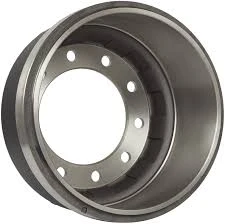
-
 Afrikaans
Afrikaans -
 Albanian
Albanian -
 Amharic
Amharic -
 Arabic
Arabic -
 Armenian
Armenian -
 Azerbaijani
Azerbaijani -
 Basque
Basque -
 Belarusian
Belarusian -
 Bengali
Bengali -
 Bosnian
Bosnian -
 Bulgarian
Bulgarian -
 Catalan
Catalan -
 Cebuano
Cebuano -
 Corsican
Corsican -
 Croatian
Croatian -
 Czech
Czech -
 Danish
Danish -
 Dutch
Dutch -
 English
English -
 Esperanto
Esperanto -
 Estonian
Estonian -
 Finnish
Finnish -
 French
French -
 Frisian
Frisian -
 Galician
Galician -
 Georgian
Georgian -
 German
German -
 Greek
Greek -
 Gujarati
Gujarati -
 Haitian Creole
Haitian Creole -
 hausa
hausa -
 hawaiian
hawaiian -
 Hebrew
Hebrew -
 Hindi
Hindi -
 Miao
Miao -
 Hungarian
Hungarian -
 Icelandic
Icelandic -
 igbo
igbo -
 Indonesian
Indonesian -
 irish
irish -
 Italian
Italian -
 Japanese
Japanese -
 Javanese
Javanese -
 Kannada
Kannada -
 kazakh
kazakh -
 Khmer
Khmer -
 Rwandese
Rwandese -
 Korean
Korean -
 Kurdish
Kurdish -
 Kyrgyz
Kyrgyz -
 Lao
Lao -
 Latin
Latin -
 Latvian
Latvian -
 Lithuanian
Lithuanian -
 Luxembourgish
Luxembourgish -
 Macedonian
Macedonian -
 Malgashi
Malgashi -
 Malay
Malay -
 Malayalam
Malayalam -
 Maltese
Maltese -
 Maori
Maori -
 Marathi
Marathi -
 Mongolian
Mongolian -
 Myanmar
Myanmar -
 Nepali
Nepali -
 Norwegian
Norwegian -
 Norwegian
Norwegian -
 Occitan
Occitan -
 Pashto
Pashto -
 Persian
Persian -
 Polish
Polish -
 Portuguese
Portuguese -
 Punjabi
Punjabi -
 Romanian
Romanian -
 Russian
Russian -
 Samoan
Samoan -
 Scottish Gaelic
Scottish Gaelic -
 Serbian
Serbian -
 Sesotho
Sesotho -
 Shona
Shona -
 Sindhi
Sindhi -
 Sinhala
Sinhala -
 Slovak
Slovak -
 Slovenian
Slovenian -
 Somali
Somali -
 Spanish
Spanish -
 Sundanese
Sundanese -
 Swahili
Swahili -
 Swedish
Swedish -
 Tagalog
Tagalog -
 Tajik
Tajik -
 Tamil
Tamil -
 Tatar
Tatar -
 Telugu
Telugu -
 Thai
Thai -
 Turkish
Turkish -
 Turkmen
Turkmen -
 Ukrainian
Ukrainian -
 Urdu
Urdu -
 Uighur
Uighur -
 Uzbek
Uzbek -
 Vietnamese
Vietnamese -
 Welsh
Welsh -
 Bantu
Bantu -
 Yiddish
Yiddish -
 Yoruba
Yoruba -
 Zulu
Zulu
rear drum brake springs
Understanding Rear Drum Brake Springs Their Importance and Functionality
In the realm of automotive braking systems, the rear drum brake plays a crucial role in ensuring vehicle safety and performance. While most drivers may be familiar with more prominent aspects of their cars, such as discs and calipers, the rear drum brake springs are integral components that deserve attention. This article explores the significance, types, and maintenance of rear drum brake springs.
The Function of Rear Drum Brake Springs
Rear drum brake systems operate quite differently from disc brakes. When the driver presses the brake pedal, hydraulic pressure is applied to the wheel cylinders, pushing the brake shoes against the inner surface of the drum. This friction generates the necessary stopping power. However, for this system to work efficiently, the brake shoes need to return to their original position after releasing the brakes, and this is where brake springs come into play.
Brake springs are designed to retract the brake shoes after the brake pedal is released. They help maintain proper tension and positioning of the brake shoes, ensuring that they align perfectly with the drum once the braking force is removed. Without functioning springs, the shoes could remain in contact with the drum, leading to premature wear and reduced braking efficiency.
Types of Rear Drum Brake Springs
There are typically two types of springs in a rear drum brake system the return springs and the hold-down springs
.1. Return Springs These springs are the primary components responsible for pulling the brake shoes back after the brake is disengaged. Generally made of high-tensile steel, return springs are designed to withstand repeated stress without losing their elasticity. They provide a significant force to ensure that the shoes do not drag against the drum during normal driving, which could lead to overheating and other mechanical issues.
rear drum brake springs

2. Hold-Down Springs As their name suggests, these springs hold the brake shoes in place. They secure the shoes against the backing plate and prevent them from moving too far outward when the brakes are applied. This stability is vital for maintaining consistent braking performance and avoiding shoe misalignment.
Importance of Maintenance
Like all components of a braking system, the performance of rear drum brake springs can degrade over time. Factors such as exposure to heat, road debris, and corrosive environments can weaken these springs, which may lead to inefficiencies in the braking system.
Routine maintenance is essential to ensure the longevity and reliability of brake springs. Mechanics often recommend inspecting the rear drum brakes during regular vehicle service intervals. During these inspections, they will look for signs of wear or damage in the springs and replace them as needed.
Failing to address worn or malfunctioning brake springs can result in a host of issues, including reduced braking performance, uneven wear on the brake shoes, and even complete brake failure in severe cases. Therefore, proactive maintenance can save drivers from costly repairs and enhance safety on the road.
Conclusion
In summary, rear drum brake springs are a vital component of the braking system, contributing significantly to the efficiency and safety of vehicle operation. By understanding their role and ensuring they are well-maintained, drivers can better appreciate the complexities of their braking systems. Whether you are a car enthusiast or a casual driver, knowledge of these components helps underscore the importance of regular vehicle maintenance and the intricate design behind modern automobiles. Remember, a well-functioning brake system is crucial for not only your safety but also that of others on the road.
-
What Are Drum BrakesNewsJul.07,2025
-
Understanding Brake Drum MaterialNewsJul.07,2025
-
Semi-Trailer Brake Drum: A Key Component for Extreme Loads and Long-Distance TransportNewsJul.07,2025
-
Drum Brake Pads for SaleNewsJul.07,2025
-
Brake Drums for SaleNewsJul.07,2025
-
Brake Drum ManufacturerNewsJul.07,2025
-
Aluminum Brake Drums: The Future of High-Performance CarsNewsJul.07,2025
